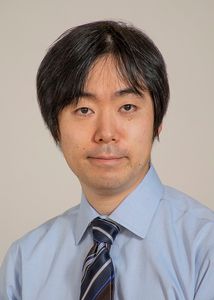Yuzuru Sasamoto, MD, PhD

Assistant Professor of Ophthalmology
Telephone: 617-358-2195
E-mail: sasamoto@bu.edu
Education:
M.D. : Osaka University School of Medicine
Ph.D. : Osaka University Graduate School of Medicine
Research Interests:
The cornea consists of three layers: epithelium, stroma and endothelium. Low vision originating in the cornea is the 4th leading cause of blindness globally (5.1%) according to the World Health Organization.
Our laboratory’s main interest is the corneal epithelium, which is maintained by stem cells residing in the limbus, the area between the cornea and conjunctiva. These stem cells are known as limbal stem cells (LSCs) and give rise to progenitor cells, which migrate toward central and apical cornea to form the stratified corneal epithelial cell layers. Loss of LSCs result in limbal stem cell deficiency (LSCD); the patients suffer from severe vision loss due to the ingrowth of cloudy conjunctiva. While unilateral LSCD can be treated by transplantation of autologous limbal tissue, patients with bilateral LSCD have to rely on allogeneic transplantation and the clinical outcome is relatively poor. In addition, the shortage of corneal donors reduces the opportunity for allogeneic transplantation. There is, therefore, a critical need to develop a less invasive therapy to treat LSCD that also address the donor shortage.
Our current ongoing research projects include:
- The mechanism of maintenance of progenitor cells in the limbus and cornea.
It is important to understand how the corneal epithelium is maintained to develop treatments of limbal/corneal diseases. We reported that the BCAM is a marker of progenitor cells in the limbus and cornea. We showed that BCAM is functionally required for cellular migration and differentiation and that its expression is regulated by transcription factor p63. We identified multiple genes highly expressed in the progenitor cells, and currently continue to investigate the functional role of these genes in the limbus/cornea.
- The mechanism of differentiation of LSCs/progenitor cells.
The molecular mechanism how the LSCs/progenitor cells differentiate is not fully understood. We showed that two PAX6 isoforms have different roles on corneal epithelial marker expressions, and TET2 regulates the genes expressed in differentiated corneal epithelial cells.
- Recovery of ocular surface in LSCD eyes.
The goal of this project is to develop novel treatments of LSCD. Our approach is to use eye drops to recover the ocular surface phenotype. We also spotlight the stem cell niche environment such as basement membrane and limbal fibroblasts.
Publications: https://www.ncbi.nlm.nih.gov/myncbi/yuzuru.sasamoto.1/bibliography/public/